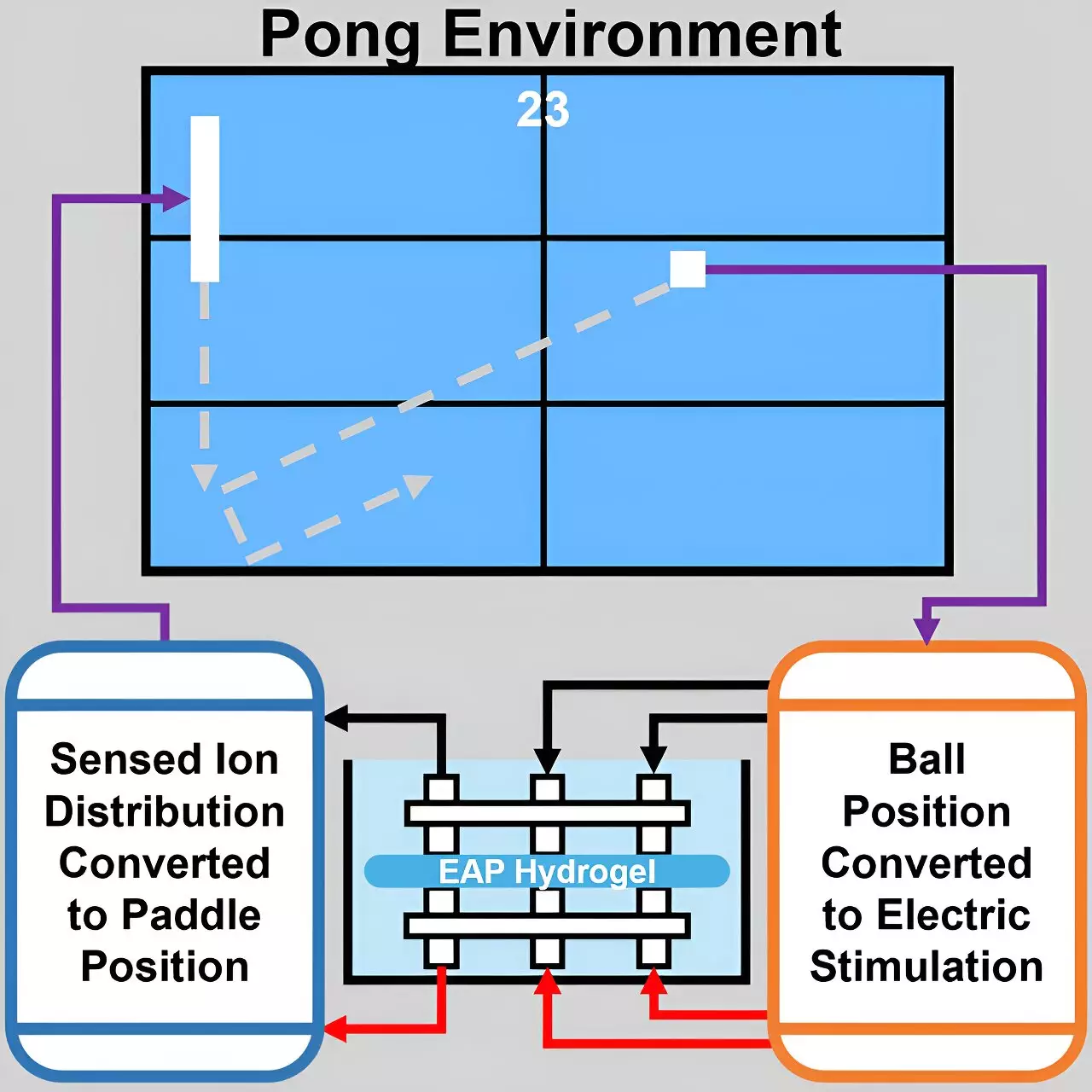Recent advancements in the field of materials science have exposed intriguing parallels between living systems and artificial materials. A groundbreaking study led by Dr. Yoshikatsu Hayashi at the University of Reading has demonstrated that hydrogels—soft, flexible substances—can learn to play the classic video game “Pong.” This achievement opens up a captivating discussion about the potential for materials inspired by biological principles to demonstrate intelligent behavior and adaptability, challenging preconceived notions about the exclusivity of intelligence.
The research, detailed in a publication from Cell Reports Physical Science, reveals that through interaction with a specially designed multi-electrode array, hydrogels can not only respond to stimuli but also adapt their behavior over time. Dr. Hayashi asserts that this finding uncovers vast opportunities in the domain of “smart” materials. Such materials could be engineered to learn and adjust to dynamic environments in a manner akin to sophisticated artificial intelligence (AI).
At the heart of this phenomenon lies the movement of charged particles within the hydrogel in response to electrical stimulation. This ionic activity fosters a kind of memory, akin to neural networks that govern learning processes in biological organisms. First author Vincent Strong emphasizes that ionic hydrogels can acquire memory mechanics similar to those found in more elaborate AI systems. The hydrogel’s capacity to improve its performance in “Pong” suggests that even straightforward materials possess untapped potential for adaptability and learning.
The inspiration for this investigation arose from earlier research indicating that cultured brain cells could learn to play “Pong” when provided with electrical feedback. Dr. Hayashi highlights the significance of understanding whether simple artificial systems can engage in feedback loops that resemble the sensory-motor connections seen in biological neural networks. In this context, the hydrogel operates not with internal ionic movement like neurons but rather through external ion flow, linking fundamental principles of material science to neural function.
Most current artificial intelligence is built on neural network architectures derived from biological brain systems. However, the study on hydrogels suggests an alternative route to intelligence—one that relies on simpler, more versatile materials. Rather than mimicking brain functions, these hydrogels leverage their unique properties to create an emergent form of intelligence. The researchers plan further exploration of the memory mechanisms within hydrogels and their ability to execute various tasks, broadening the practical applications of these intelligent materials.
In a related investigation, Dr. Hayashi’s team examined a different hydrogel capable of synchronizing its oscillations with an external pacemaker, mimicking the coordinated contraction of cardiac muscle cells. The results underscore the potential for hydrogels to simulate biological processes and contribute to our understanding of intricate bodily functions. Through cyclic compression, the hydrogels maintained a chemical rhythm even in the absence of the pacemaker, hinting at their ability to store and recall learned behaviors. This fundamental discovery may pave the way for innovative applications in cardiac health, serving as a substitute for animal testing in research.
The ramifications of this research extend beyond academia, touching on pressing issues in healthcare. The ability to study cardiac arrhythmias, which affect millions globally, could be revolutionized using these newly developed hydrogel models. As Dr. Tunde Geher-Herczegh notes, the challenge of studying the complexities of heart mechanics in isolation from their chemical counterparts has been substantial. By providing an alternative means for investigation, the findings contribute to the creation of viable treatments for arrhythmia and deepen our understanding of how artificial materials can complement or replace biological tissues in research.
The innovative nature of this research suggests that the foundational elements that drive learning and adaptation in living systems are more universal than previously acknowledged. By bridging disciplines such as neuroscience, materials science, and cardiac research, researchers are opening new avenues for exploration in soft robotics, prosthetics, and intelligent environmental sensing materials.
As the research progresses, the focus will be on developing more intricate behaviors and potential applications for these intelligent hydrogels. The underlying message of this study is clear: intelligence and adaptability are not the sole domain of traditional AI, but can emerge from the innovative use of materials derived from nature’s principles. As we move forward, the role of such hydrogels may redefine our approach to material science and artificial intelligence, crafting a future where smart materials play a pivotal role in advancing technology and medical research while potentially reducing reliance on animal models.


Leave a Reply